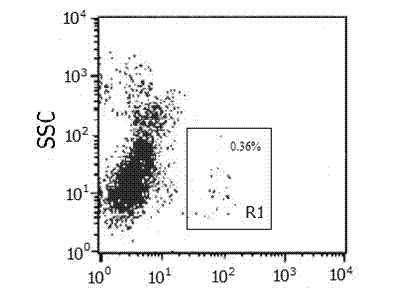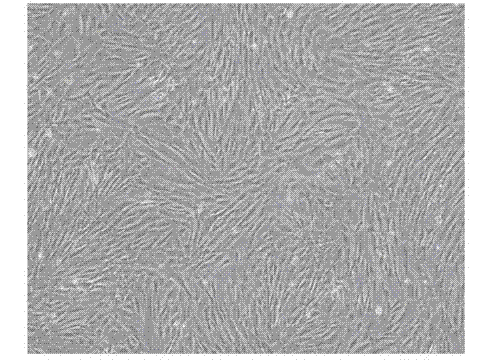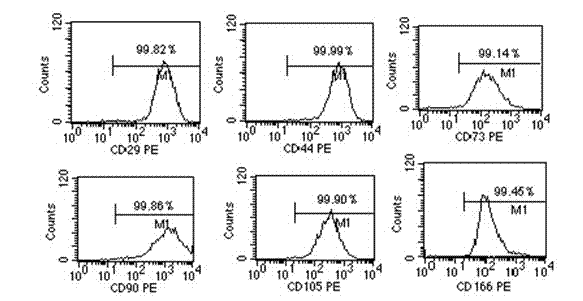CD106-positive cells, and identification and preparation method and application thereof
An identification method, a technology of positive cells, applied in the field of separation and preparation of CD106 mesenchymal stem cells
- Summary
- Abstract
- Description
- Claims
- Application Information
AI Technical Summary
Problems solved by technology
Method used
Image
Examples
Embodiment 1
[0024] Example 1: Isolation of placenta-derived cells and acquisition and expansion of CD106-positive cells.
[0025] 1. Placenta collection, the placenta was collected with the informed consent of the parturient. Wash the placenta with sterile normal saline, then put the placenta into a special aseptic collection box, and add the collection solution. The placentas were then transported to the experimental site at 4°C for no more than 48 hours.
[0026] 2. Isolation of mesenchymal stem cells from placental chorionic tissue: (1) Separate the chorionic tissue by mechanical means; (2) Cut the tissue to 0.1-1 cubic centimeter, and then wash the tissue block repeatedly with phosphate solution5 (3) Add collagenase and trypsin mixture at a ratio of 1:1 to the tissue volume, and digest at a constant temperature of 37°C for 60 minutes; (4) Pass Use a 200-mesh filter to obtain a single-cell suspension, centrifuge, and remove the supernatant; (5) Resuspend the cells in DF12 medium.
...
Embodiment 2
[0034] Example 2: Sorting of CD106 positive mesenchymal stem cells.
[0035] The expanded mesenchymal stem cells were separated from the placenta-derived cells to separate CD106-positive cells by using a magnetic bead sorting method well known to professionals.
[0036] Results: After sorting by magnetic beads, the purity of CD106 positive cells obtained was 97.91%.
Embodiment 3
[0037] Example 3: CD106-positive mesenchymal stem cells express higher levels of COX2 / PGE2 and HGF.
[0038] The CD106-positive mesenchymal stem cells and CD106-negative mesenchymal stem cells were amplified to the required number respectively, and the culture supernatant was aspirated for future use, and the mRNA of the above two cells was extracted by a method well known to professionals, and reverse transcribed into cDNA. Quantitative polymerase chain reaction (rt-PCR) was used to compare the mRNA expression levels of COX2 and HGF in the two cells.
[0039] Use enzyme-linked immunosorbent assay (ELISA) well-known to professionals to detect the contents of PGE2 and HGF in the culture supernatant retained in the previous step.
[0040] Result: CD106 + mesenchymal stem cells than CD106 - Mesenchymal stem cells express higher levels of COX2 and HGF mRNA (see Figure 5 ), CD106 + mesenchymal stem cells than CD106 - Mesenchymal stem cells express higher levels of PGE2 and H...
PUM
| Property | Measurement | Unit |
|---|---|---|
| purity | aaaaa | aaaaa |
Abstract
Description
Claims
Application Information
 Login to View More
Login to View More - R&D
- Intellectual Property
- Life Sciences
- Materials
- Tech Scout
- Unparalleled Data Quality
- Higher Quality Content
- 60% Fewer Hallucinations
Browse by: Latest US Patents, China's latest patents, Technical Efficacy Thesaurus, Application Domain, Technology Topic, Popular Technical Reports.
© 2025 PatSnap. All rights reserved.Legal|Privacy policy|Modern Slavery Act Transparency Statement|Sitemap|About US| Contact US: help@patsnap.com



